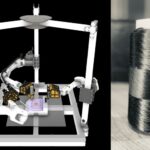Tuberculosis represents a growing challenge for public health organizations around the world and can only be reliably diagnosed via identification of the bacteria Mycobacterium tuberculosis (MTB). But MTB is slow growing and existing diagnostic methods can be expensive and unreliable, so a new identification tool is desirable that can offer a swift diagnosis with low levels of false-positive responses. Immunological biomarkers of TB offer a promising target, particularly the antigen MPT64, a surface protein secreted by MTB, which is detectable in the immune system of most patients with TB. Long-chain oligonucleotide or peptide molecules called aptamers are a practical means of detecting antigens because of their high affinity and specificity combined with stability and ease of preparation.
Now researchers from the Chongqing Medical University and West China Hospital of Sichuan University in China led by Lijuan Bai have developed an electrochemical aptamer sensor based on a novel carbon nanocomposite for detecting MPT64 antigen in samples of serum from patients with TB.
The composite is composed of fullerene nanoparticles, nitrogen-doped carbon nanotubes, and graphene oxide (C60NPs-N-CNTs/GO) and has a large surface area, excellent conductivity, and inherent electroactive properties. The combination allows the composite to act as a nanocarrier and redox nanoprobe at the same time. The addition of gold nanoparticles (AuNPs) anchored onto the surface of the nanocomposite provides a means of attaching the MPT64 antigen aptamer II (MAA II).
The AuNP-decorated nanocomposite is then combined with a sensing platform consisting of a Fe-based metal-organic-framework functionalized with conductive polyethyleneimine (PEI) or P-MOF, which helps to amplify the detected signal. Metallic core-shell Au-Pt nanoparticles complete the electrochemical aptasensor by helping to immobilize MPT64 antigen I (MAA I).
The sandwich-type layered sensor provides a two-pronged strategy to amplify the signal from low levels of MTB antigens in blood samples. The blend of C60NPs, N-CNTs, and GO work together to facilitate electron transfer and boost the sensitivity of the aptamer sensor. The new sensor significantly improves the response performance for MPT64 antigen detection, say the researchers.
As a demonstration of the nanocomposite aptasensor, the researchers tested serum samples from eight patients with TB and the same number of healthy volunteers. The samples from patients with TB showed significantly higher signal responses to MPT64 than the healthy controls.
The researchers believe the results indicate that the proposed novel carbon nanocomposite aptasensor could offer an innovative platform for quick and simple TB detection in clinical applications.
Source: Chen et al., Biomaterials (2019), https://doi.org/10.1016/j.biomaterials.2019.119253













